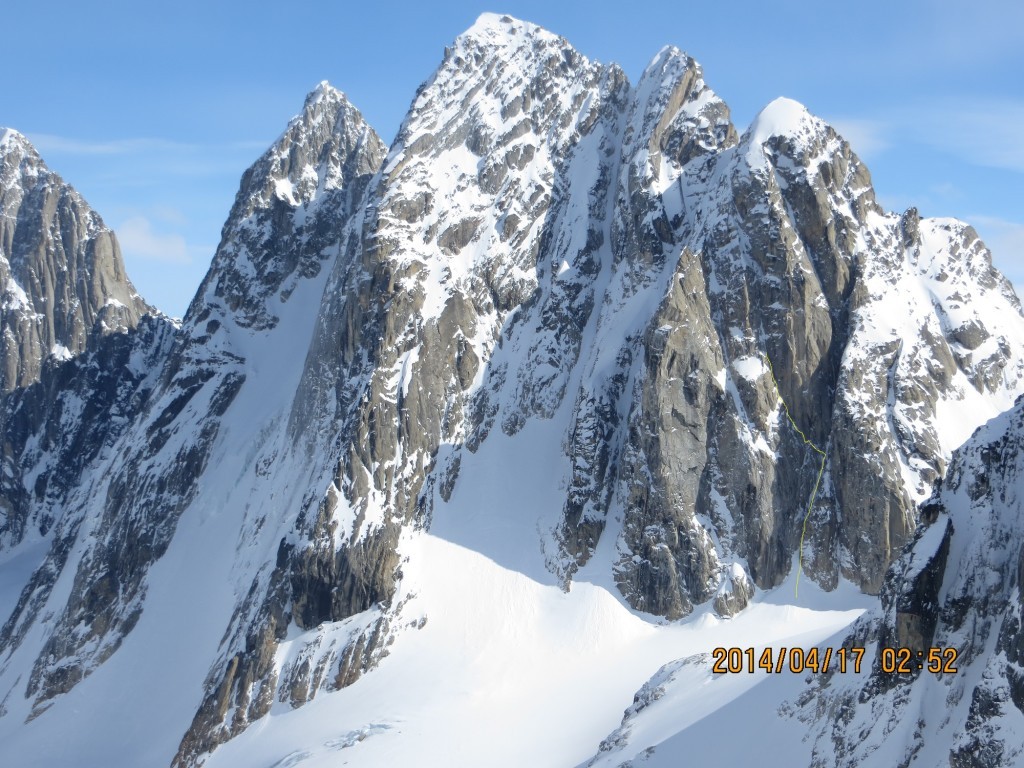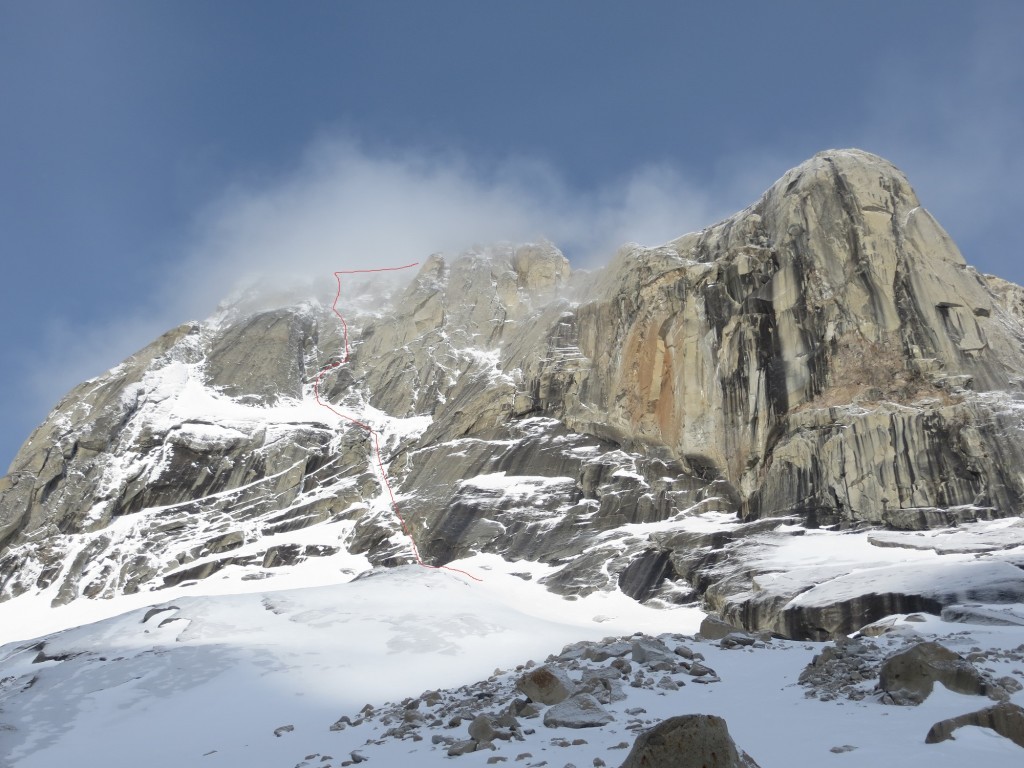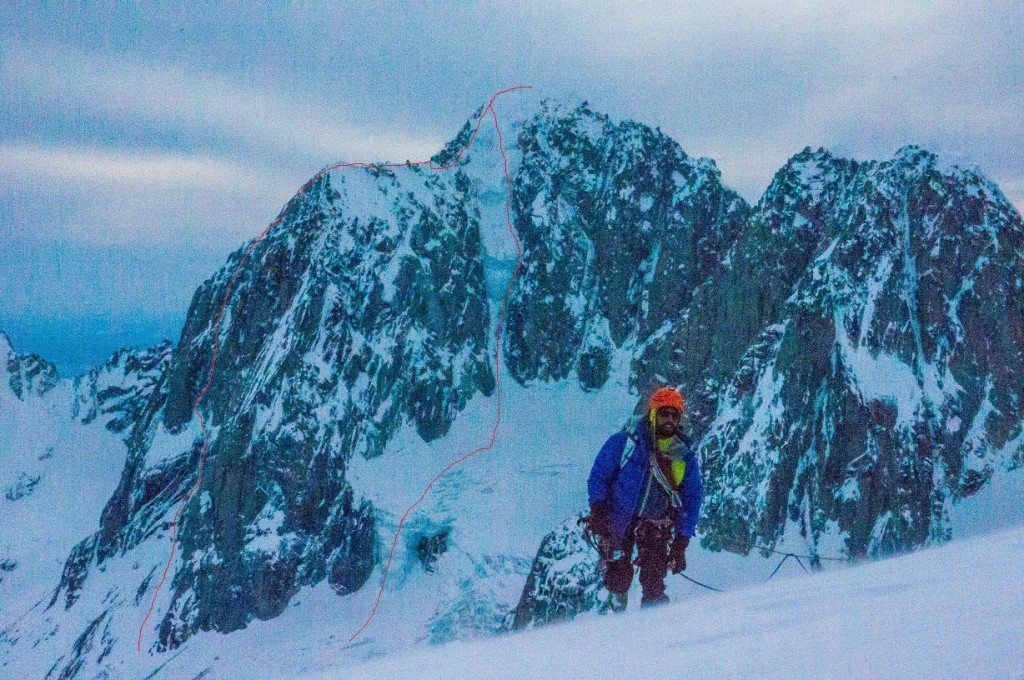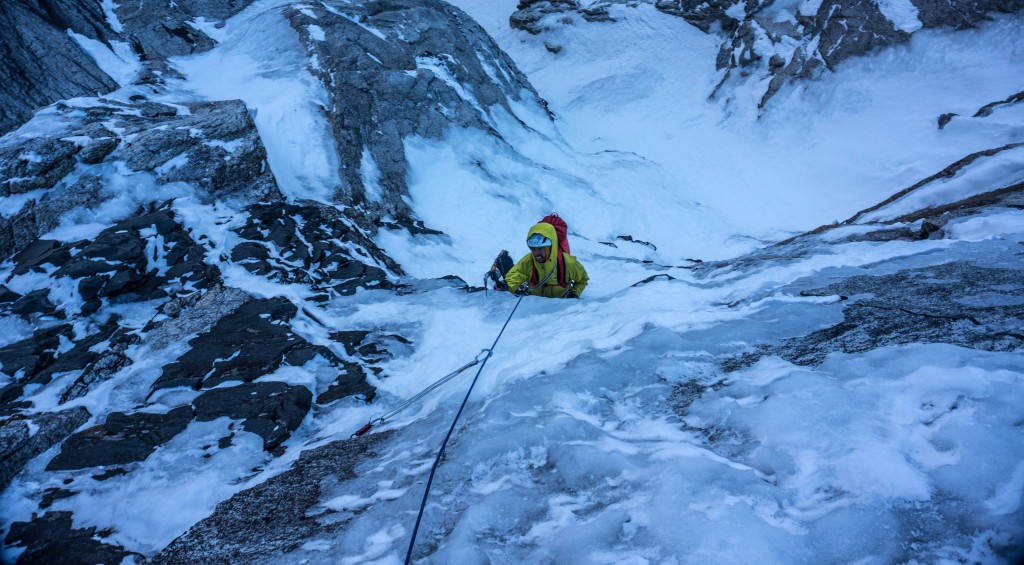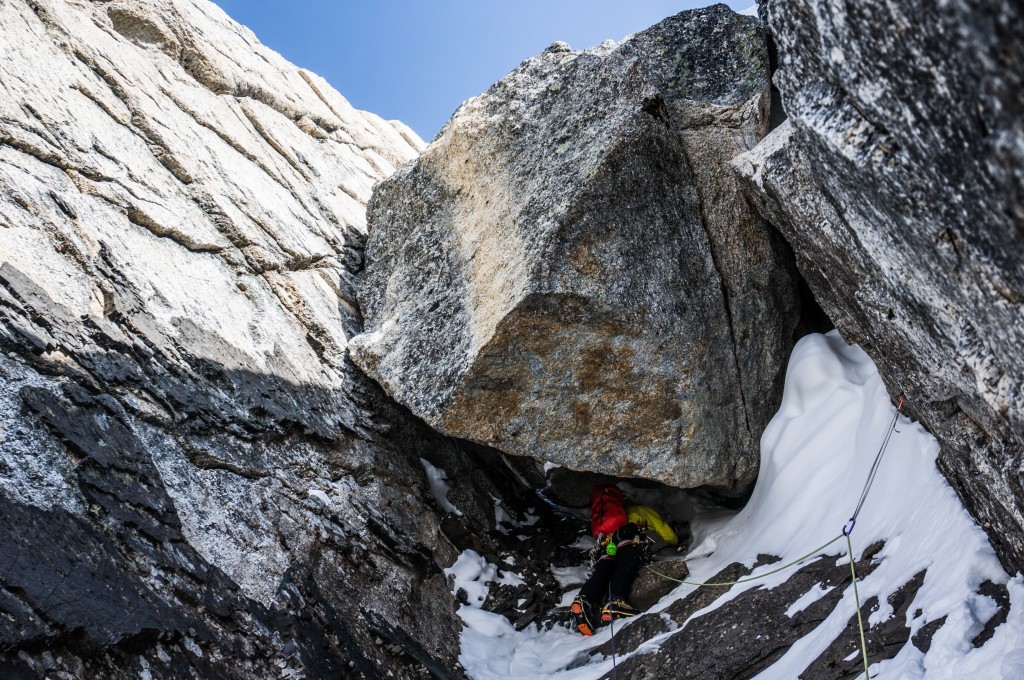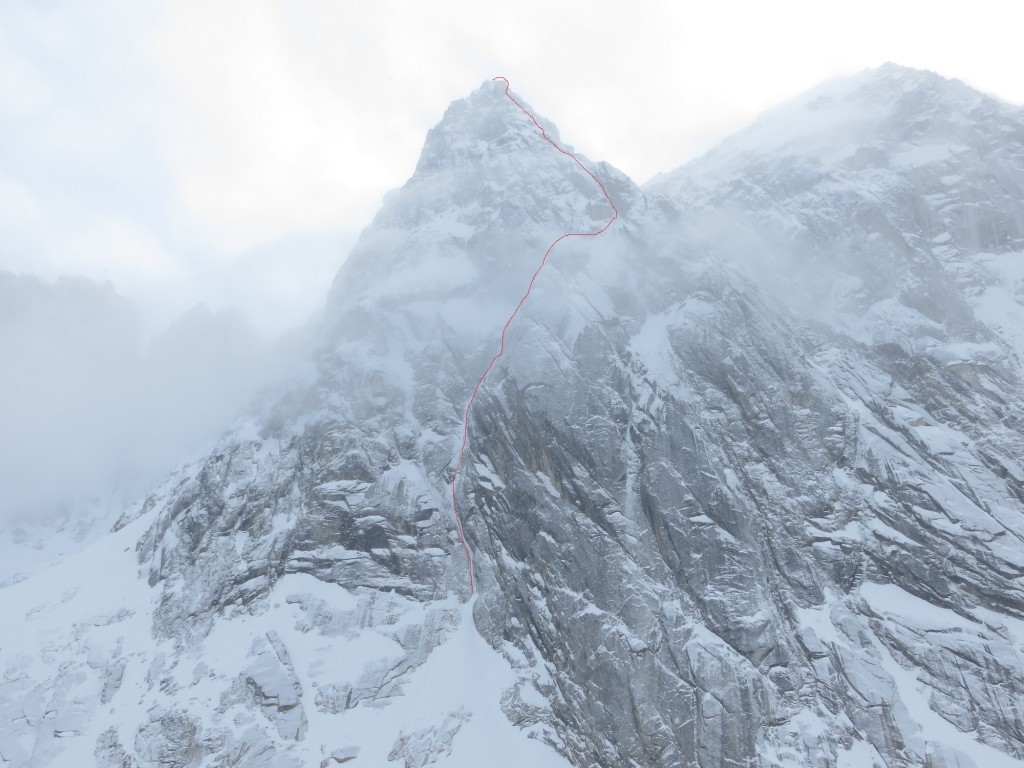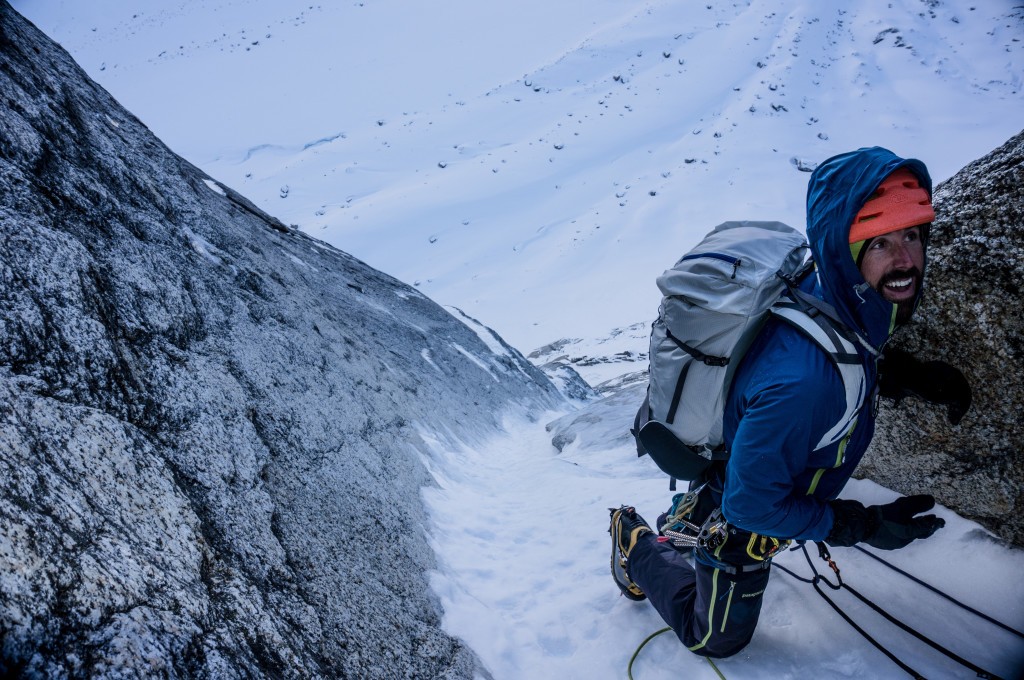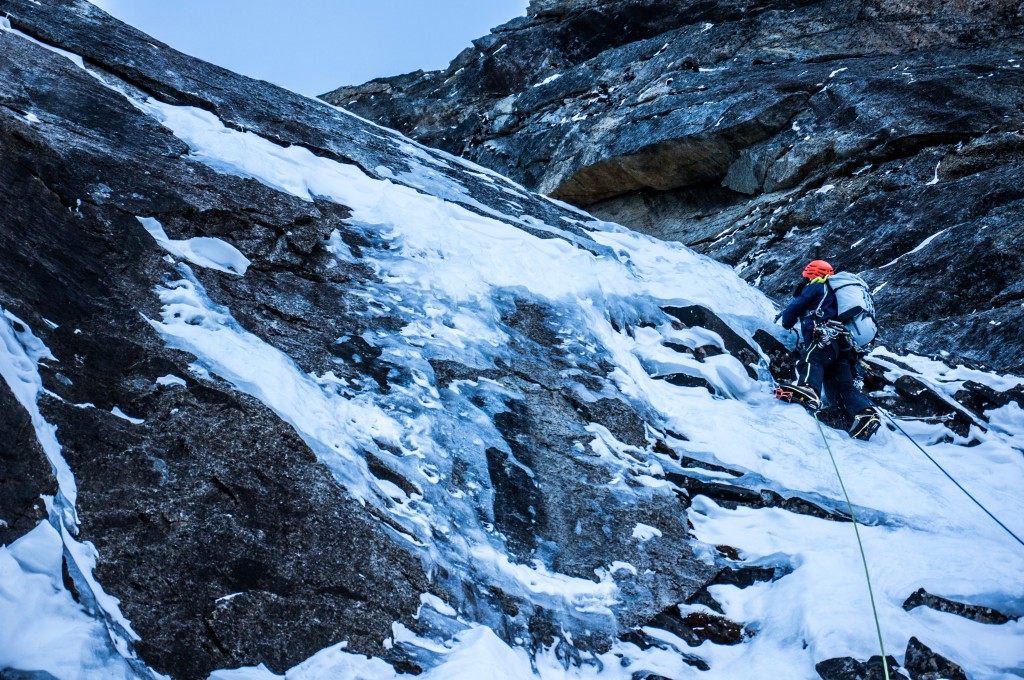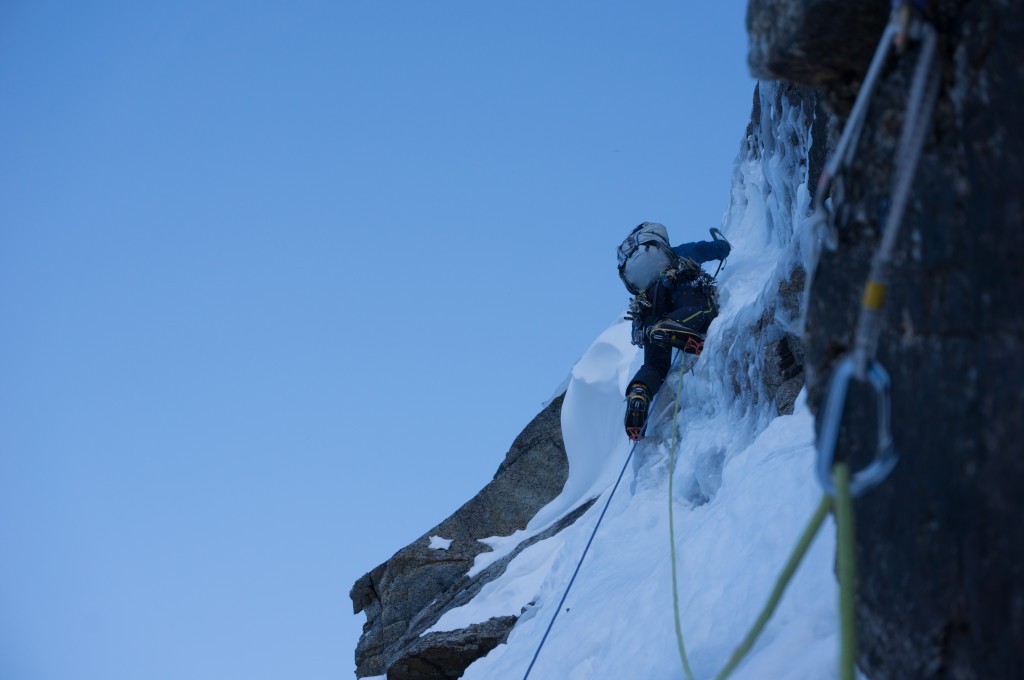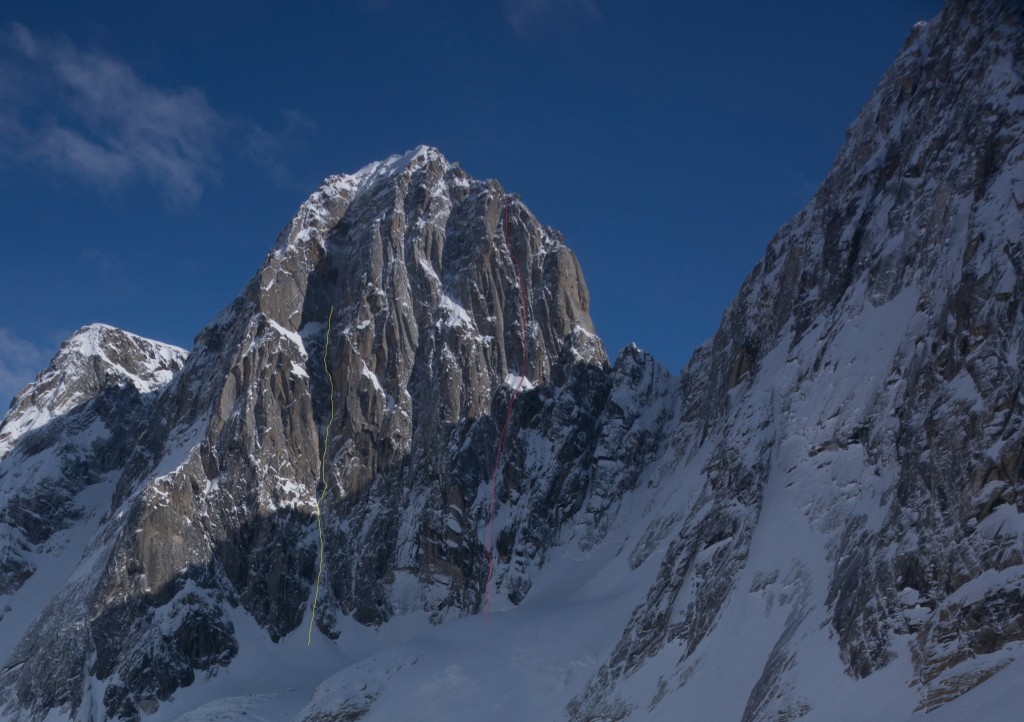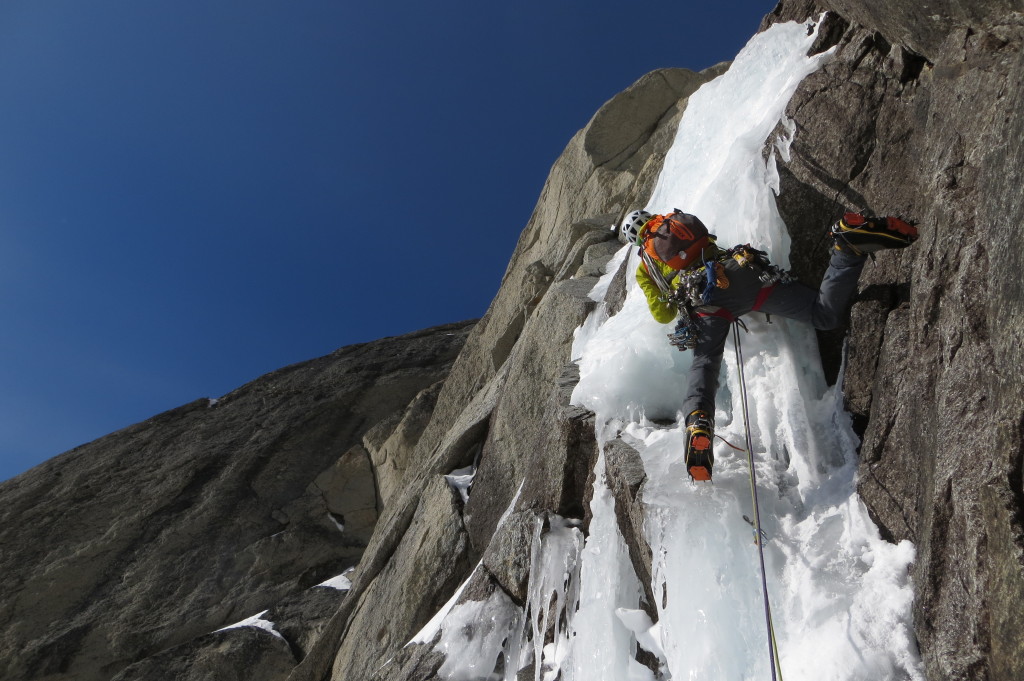Alaska’s Revelations by Ian Welsted
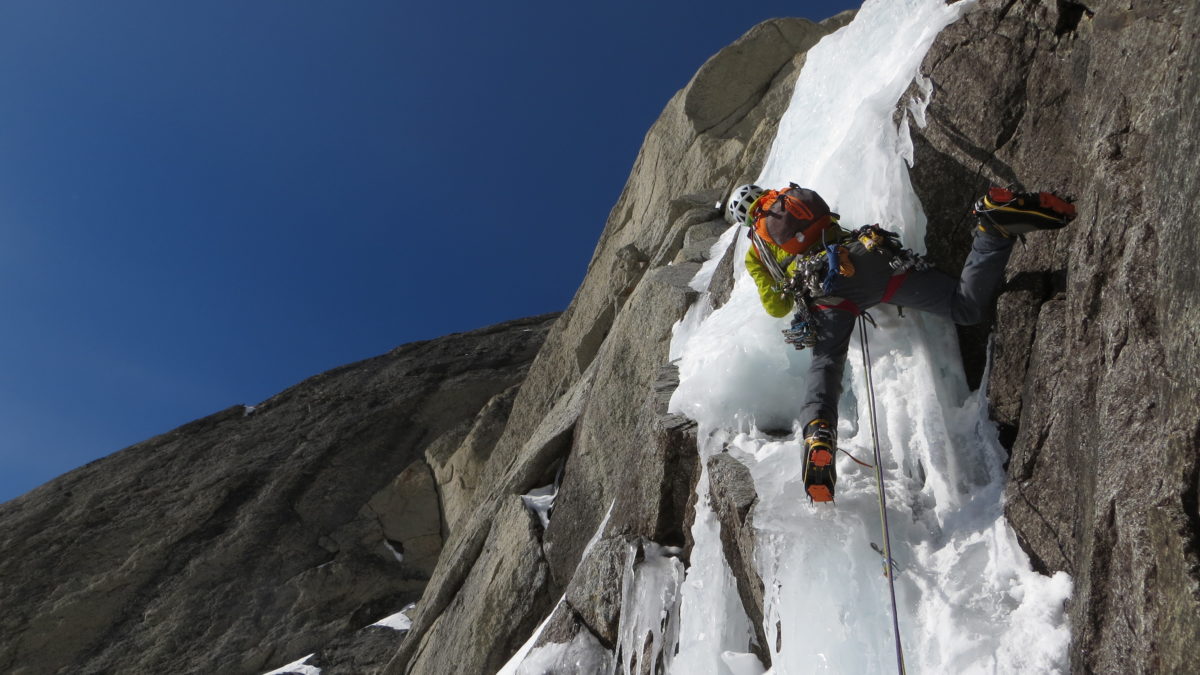
For three weeks in April, three Rockies-based climbers ventured into the rarely visited Revelations range. Ian Welsted, who was recently awarded the Piolets d’Or, Kris Irwin, owner of Rockies Ice Specialists, and Darren Vonk, a climbing guide with Yamnuska Mountain School. They were supported by the John Lauchlan Award, here is Welsted’s trip report.
We flew into the Revelations range on April 2 after seeing Clint Helander’s article in last year’s American Alpine Journal. We thought we were going cragging our second day, but unwittingly climbed The Angel by a new route we named The John Lauchlan Memorial Award Route, 1,200 metres, AI4+, M5. (See photo Angel route looking up with red line) Two ice streaks formed on the east face of the buttress behind our basecamp. Most of the route was moderate climbing with a short vertical crux (see photo Vonk on Angel crux). Arriving at what we had figured was the top of the route we realized we were on a long ridge jutting out from what seemed like one of the bigger peaks in the area. Luckily, we overcame our initial laziness to continue along the ridge and arrive at the 3,100-metre summit. Our choice of descent left something to be desired as we rapped through a hanging glacier we would later witness collapse (See photo Angel and Kris with red line route). A few days later we figured out we had summitted a peak 650 metres higher than we had originally guessed, which took some of the pressure off the rest of the trip.
Hit by warm sub-arctic temperatures, we had a late start on our next objective, a fine looking line up one of the Four Horsemen. When you start from camp at 10 a.m. you can’t be surprised when you decide you have run out of time, but truthfully it was our first experience with steep snow climbing which stopped us. We had climbed six technical pitches where we found amazing thin, sticky, coastal ice. We could not believe the tiny blobs of ice that would stick to rock in the far western reaches of the Alaska Range, unlike in our drier home range of the Canadian Rockies. We have left this beautiful line for those who visit later. (See photo 4 Horsemen with line)
On the flight in we had spotted a spectacular, thin ice line on the unclimbed Dyke Peak 2,500 metres. (See photo Dyke with red line). Our climb on Dyke went without a hitch as we had the Rockies Ice Specialist Kris Irwin to lead two thin WI5 pitches to open the passage to the moderate upper mountain. (See photos Kris on 1st Dyke Crux and Kris on dyke crux). A dreamy line of single swing neve lead us to a huge gully which followed the dyke the peak is named for, passed an impressive chockstone, and on to summit (see Kris looking down Dyke, Darren on Dyke, Darren below chockstone). It was the first ascent of the mountain as far as we know, Powered by Beans 1,000 m, AI5, M5.
With two routes down we figured we were ready for or main objective, the unclimbed central gully on Pyramid Peak. The 1,500-metrr face is what had drawn us to the range. A team of four had been in two weeks previous to our arrival and had done the first ascent of the peak via a highly technical mixed line, but the obvious central plum line remained unclimbed. On our first attempt we climbed 10 pitches. The most difficult were vertical snow steps, while the thin ice climbing was very enjoyable. We hadn’t truly expected to make it in a day and when it began snowing, ever so lightly, the gully began spindrifting heavily, and we were happy to bail from our go-look-see foray. How we didn’t register the risk of being in such a gully even with the spindrifts, I’m not sure.
Looking to tack on a “casual” day as we were all a bit tired by that point, we headed to the east face of Hydra Peak. We climbed a 700-metre route to the 2,500-metre summit which consisted of only five pitches of technical climbing. Mind blowing thin ice climbing was interspersed with a drytooling roof or two, topped by a spectacular ridge-walk where we could look out over to the flats on the western side of the range. We’d been hoping to see folks frolicking on the distant Pacific coast, but had to settle for The Casual Route 600 metres, AI4, M6.
Our joke had been that all routes for the rest of our trip would have to meet the casual criteria of our last route; less than an hour uphill ski approach from basecamp, so we could shuss home at the end of the day and starting no earlier than 10 a.m.
We should have stuck to our casual rules. On our second attempt on Pyramid, a half-hour after leaving the bottom cone of the route, we saw a full height avalanche triggered by a cornice collapse which obliterated the line. (See photo Pyramid with two route lines. Red is French success, yellow is our attempt). Perhaps it was too late in the season to be in there as daytime temperatures were becoming quite pleasant. It could have been that we were focussing on a fixed idea of a route to be done without adequately assessing its hazards; we had flown in with the idea of the route planted in our minds without even having seen it. As it is, we competed three new routes, made the first ascent of Dyke Peak, climbed about 65 technical pitches in three weeks, and visited a range which is sure to draw more interest from climbers and skiers in the future.
